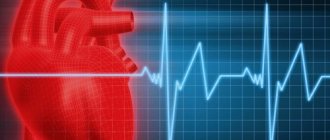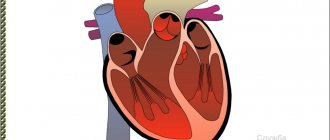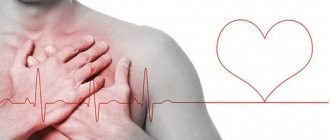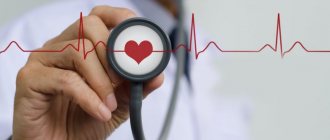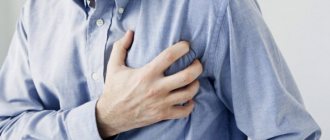Do they take into the army with arrhythmia?
The conclusion on the suitability of a conscript for military service with a diagnosis of arrhythmia is determined by Article No. 44 of the Schedule of Diseases. First, it is necessary to identify the cause of the heart disorder. If sinus arrhythmia occurs, a person liable for military service has the opportunity to serve in the army, since this type of arrhythmia, as a rule, does not imply functional impairment and does not require the use of medications. Physical activity with such a diagnosis can be more beneficial for the conscript’s health.
If arrhythmia is a concomitant manifestation of an underlying disease, for example, heart failure, ischemia, increased obesity, etc., then a medical examination will be carried out for the underlying disease, which may be the reason for exemption from military service, according to the Schedule of Diseases. Therefore, an important aspect before passing the draft board is to identify the possible presence of other heart diseases that caused cardiac arrhythmia.
There are three types of arrhythmia in which a person liable for military service is exempt from military service:
• Atrial fibrillation; • Paroxysmal arrhythmia; • Ventricular extrasystoles.
A conscript has the right not to serve in the army if the clinical picture of the disease is accompanied by severe cardiac disorders that require appropriate therapeutic measures to prevent pathology, and after the treatment course the pathological symptoms of arrhythmia gradually return. A diagnosis of “arrhythmia” (with the exception of sinus arrhythmia) is subject to the conscript’s exemption from military service with the assignment of fitness category “B” or “D”:
• Category “B” – there is no functional class of heart failure; • Category “D” - functional class of heart failure is present.
In what case will they be taken into service?
In case of physiological tachycardia, the conscript will be taken into service. Rarely, this form of the disease causes complications in the heart. A young man with a pathological type of disease is recognized as fit and sent to serve, if the disease is not associated with more serious illnesses that provoked a heart rhythm disorder.
If the tachycardia is not paroxysmal or there is no persistent heart rhythm disturbance, there is no reason for release. Sinus tachycardia can be recorded after drinking coffee or smoking a cigarette. If her symptoms go away after a certain period of time, most likely the young man is healthy and will be taken into service. In some cases, a young person is assigned category “B” (fit with minor restrictions).
What heart diseases are not accepted into the army?
Any cardiac pathology is classified based on the American NYHA classification of chronic heart failure. There are four functional classes (FC):
• 1 FC
– there are no restrictions in physical activity, physical activity does not cause painful symptoms of the disease;
• FC 2
– moderate limitation of physical activity, physical activity causes fatigue, palpitations, shortness of breath, etc.;
• FC 3
– severe limitation of physical activity, any physical activity causes pronounced symptoms of the disease;
• 4 FC
– symptoms of the disease are present both at rest and during physical activity.
The draft board considers heart disease in accordance with the NYHA classification of chronic heart failure and, based on the data obtained, assigns a category of fitness for military service.
ATTENTION.
The medical commission considers not only the presence of the disease itself, but also the accompanying clinical factors that determine the recruit’s suitability for military service.
The effect of tachycardia on men's health
Natural tachycardia does not have a significant negative effect on the body as a whole, men's health in particular. In order for the condition to normalize, it is necessary to rest, calm down, and eliminate the influence of irritating factors. Pathological tachycardia causes a number of negative consequences with a deterioration in general well-being, the functioning of other systems, and internal organs.
Consequences of pathological tachycardia:
- weakness;
- decreased performance;
- dizziness;
- fainting, presyncope;
- changes in blood pressure;
- noise in ears;
- spots before the eyes;
- pain in the heart area;
- etc.
To normalize the condition, special treatment and measures are required.
Categories of suitability for military service with heart problems
Based on the functional class, the category of suitability for military service is determined.
Article Schedule of diseases “Rheumatism, rheumatic and non-rheumatic heart diseases”:
• Article No. 42, paragraph “c” – heart disease in the presence of heart failure 2 FC, fitness category “B”; • Article No. 42, paragraph “b” – heart disease in the presence of heart failure 3 FC, fitness category “D”; • Article No. 42, paragraph “a” – heart disease in the presence of heart failure 4 FC, fitness category “D”. Article of the Schedule of Diseases “Coronary Heart Disease”: • Article No. 44, paragraph “a” – chronic heart failure FC 4 and 3, fitness category “D”; • Article No. 44, paragraph “b” – chronic heart failure 2 FC, fitness category “B”; • Article No. 44 point “c” – chronic heart failure 1 FC, fitness category “B”.
Varieties
Tachycardia is characterized by a heart rate of 90 beats per minute. The main thing is to understand the difference between the two varieties: physiological and pathological. The first is caused by processes of the same name: strong emotions, muscle stress, etc. The second is inherent in people with various diseases. It is clear that only the second is dangerous.
Tachycardia is a symptom of another disease, but not the disease itself.
Symptoms:
- Heart rate exceeding the range of 60-90;
- Dizziness;
- Feeling weak;
- Hard breath;
- Painful feeling in the chest;
- Pre-fainting state.
First of all, the medical commission determines the disease accompanying tachycardia, and then makes a conclusion about the conscript’s membership in the fitness category. Below is a list of possible diseases of which it is a symptom:
- Disorders of the sinoarterial node of an ischemic nature;
- Diseases of an infectious and toxicological nature;
- Fever;
- Anemia;
- Vegetative-vascular dystonia;
- Oxygen starvation;
- Malignant tumors;
- Hypotension;
- Thyrotoxicosis (thyroid disease);
- Cardiovascular failure;
- Myocarditis;
- Purulent infection.
- Tachycardia occurs:
- Sinus;
- Paroxysmal.
Interestingly, there is a heart rhythm disorder that is completely opposite to rapid heart rhythm. Obviously, this is a slow heartbeat, medically called bradycardia. It is characterized by 30-50 beats per minute. In itself, it is not dangerous, but it can serve as a sign of the appearance of problems in any organ of our body, with subsequent disruption of its functions.
Sinus
As a rule, a rhythm exceeding 100 beats per minute is observed. The natural heart rate for a healthy adult male is about 60-100 beats per minute, and for women it is 60-90. It is useful to note that different age categories have their own optimal heart rate values. For infants, values from 110 to 150 are taken, and for older people, lower values are used.
Causes of tachycardia:
- Pain;
- Fever;
- Hypovolemia with signs of hypotension and shock;
- Anemia;
- Hyperthyroidism;
- Mercury poisoning;
- Pheochromocytoma;
- Sepsis;
- Chronic obstructive pulmonary disease;
- Hypoxia;
- Taking stimulants;
- Hyperdynamic circulation;
- Electric shock;
- Injection of drugs;
- Porphyria;
- Demyelinating polyradiculoneuropathy;
- Postural syndrome of orthostatic tachycardia.
Paroxysmal
Paroxysmal tachycardia is episodes of rapid heart rate from time to time. It is a common clinical condition that occurs in all age groups. The course is quite varied: asymptomatic, with mild cardiac arrhythmias and with a heart rate of up to 220 beats per minute. In addition, the duration of the attack is very variable: from
a few seconds up to several days. Rare complications include myocardial infarction, congestive heart failure, syncope, and sudden death. Treatment can be difficult.
Accordingly, paroxysmal tachycardia occurs:
- Atrial;
- Ventricular;
- Nodal.
Atrial tachycardia is a heart rhythm disorder in which the heart's electrical impulse originates from an ectopic pacemaker (that is, an abnormally located pacemaker) in the upper chambers (atria) of the heart rather than from the sinus node, the normal origin of the heart's electrical activity. The cause is usually increased activation of the sympathetic nervous system.
The disease may exhibit consistent heart rhythms ranging from 140 to 220 beats per minute. Atrial tachycardia is a risk factor for atrial fibrillation.
Ventricular tachycardia is a type of regular and fast heart rhythm that occurs due to abnormal electrical activity in the ventricles of the heart. While a few seconds may not cause problems, longer periods are dangerous. Tachycardia may occur without symptoms. It can also lead to cardiac arrest and turn into ventricular fibrillation. It is initially found in approximately 7% of people following cardiac arrest.
May occur due to coronary artery disease, aortic stenosis, cardiomyopathy, electrolyte problems, or after a heart attack. It is characterized by a heart rate of more than 120 beats/min. The attack is classified as intermittent or sustained based on whether it lasts less than or more than 30 seconds. It is more common in women than men (about 75% of cases occur in women). Treatment may be with medications or, less commonly, synchronous cardioversion. Frequent attacks may require radiofrequency ablation, which destroys the conductive tissue in the heart.
Junctional tachycardia is the most common form of supraventricular tachyarrhythmia; pulse is within 140-250 beats per minute. More common in women (70%). Concomitant heart diseases occur in only 15% of cases. The disease occurs in the form of attacks of frequent rhythmic heartbeat, which begins and stops suddenly.
The frequency of occurrence varies from daily to several times a year, and the duration ranges from a couple of seconds to several hours. During an attack, dizziness and throbbing in the neck are likely.
Diagnosis and required documents for the draft medical examination
Heart diseases are diagnosed as follows:
• ECG; • MRI; • Echocardiography; • 24-hour ECG (Holter method); • ABPM; • Ultrasound of the vascular system; • Applanation tonometry. Also, the functioning of the cardiac system can be diagnosed using a test method: • Electrophysiological study; • Exercise test; • Tilt table test.
REFERENCE.
The conscript must provide all available medical documents confirming the diagnosis. You can also provide a medical history, such as an outpatient card, etc.
Arrhythmia may be a concomitant disease that hides a more serious heart pathology. In this case, a medical examination should be based on identifying the causes of cardiac pathology in order to objectively assess the recruit’s suitability for military service. The draft commission issues a referral for additional examination. A cardiologist will conduct an examination to confirm the diagnosis, on the basis of which the draft commission will subsequently make a decision on the possibility of serving in the army. It is worth noting that obtaining a referral for additional testing becomes difficult if the recruit reports cardiac complaints but has no prior medical history. If electrocardiography does not diagnose pathological changes in the conscript’s cardiac activity, then the draft commission, as a rule, does not issue a referral for additional examination.
A little about your body
Diseases of the cardiovascular system are among the most dangerous, because the organs of this particular system transport oxygen throughout the body, removing carbon dioxide and other harmful substances. As you know, we are not able to live without oxygen, because our brain begins to die after 5 minutes of its absence, in trained people - after 9. Due to oxygen starvation, seizures, convulsions, and then death occur. That is why the heart is the “engine” of our body.
It is important for every person to monitor their health. It is necessary to periodically check with a doctor, expose yourself to regular physical activity, and eat right. If you experience any unpleasant symptoms, go and see a doctor immediately. This may be a sign of a serious illness, which will later cause complications. We recommend that you familiarize yourself with the list of diseases that can cause tachycardia in more detail.
What should a conscript do if he does not agree with the results of the medical examination?
You can challenge the decision of the military registration and enlistment office in two ways - with the help of a higher military registration and enlistment office or through the court in accordance with Article No. 28 of the Federal Law of the Russian Federation “On Military Duty and Military Service”. The conscript must draw up a corresponding complaint and submit it to the government agency. The document must indicate the following:
• Appeal authority; • Personal data of the conscript; • Postal address of the conscript; • Description of the controversial issue; • Conscript's signature; • Date of.
The document does not have a standardized template, but the necessary information must be indicated, otherwise the complaint will not be considered. Also, along with the complaint, you must provide medical reports on the health status of the conscript, which will influence the review of the decision. The complaint must be considered no later than five working days. In the event of a repeat medical examination, the conscript will be notified of the new date of examination.
IMPORTANT.
You can contact the court and the higher military registration and enlistment office at the same time to effectively resolve the controversial issue.
Medical examination at the military registration and enlistment office and tachycardia
Since tachycardia itself is not a reason for a deferment, in order to obtain an exemption or deferment from the army, it is necessary to obtain a diagnosis, which is indicated in the Schedule of Diseases. It is not the responsibility of the doctors at the military commissariat to establish a diagnosis, but they have the right to send the conscript for further examination to confirm it. What is taken into account is not so much the young person’s health complaints, but rather the documents that indicate the diagnosis, examination results, treatment, therapeutic effect, and recommendations from specialists. If you have health problems, you need to go to the medical examination at the military registration and enlistment office prepared.
Tachycardia may be detected for the first time during examination at the military registration and enlistment office. In this case, doctors give a referral to a cardiologist or other specialists to clarify the diagnosis and determine the root cause of tachycardia. If technical examination methods do not confirm the pathology, the conscript is sent to serve. Some physical restraint may be provided.
Neoplasms
Malignant and benign neoplasms are a contraindication to military service if the tumor cannot be radically removed, there are metastases or significant dysfunction of any organs.
In addition, those who refused therapy for a tumor will not be accepted into the army. Persons undergoing treatment for neoplasms will be given a deferment and will be subject to re-examination in the future.
- malignant neoplasms;
- benign formations that interfere with the proper functioning of organs.
Probability of avoiding service with arrhythmia
Except for cases where pronounced symptoms indicate a complex disease or the presence of concomitant diagnoses, evading military service is not so easy.
Attempts to mislead members of the medical-military commission are fraught with trouble: the law provides for serious punishment for “deviators,” ranging from impressive amounts of fines to criminal liability.
Verbal complaints about rapid rhythm without documentary evidence can be ignored and considered as a result of excitement. It is pointless to pretend in front of experienced doctors, and you should also not look for illegal ways to “slope” in the form of buying a military personnel or other dubious options.
Not wanting to undergo the tests of difficult everyday life in the army, a rational solution would be to turn to professionals in this field.
Mitral valve prolapse
In the presence of mitral valve disease (MVD) of the 1st degree, the characteristic symptoms of the disease are often absent. The patient's health remains satisfactory. The answer to the question of whether people with congenital mitral valve disease of the 1st degree are recruited into the army is positive. PMH of the first degree is not one of the diseases that exempts you from the army. At the same time, the accompanying documents indicate the relevant information about the presence of mitral valve disease in the young man.
In the presence of mitral valve disease of 2 or 3 degrees, oxygen starvation may occur. It may be accompanied by the following adverse symptoms:
- feeling of fatigue;
- dizziness;
- cardiopalmus.
A young man who has been diagnosed with stage 2 or 3 mitral valve disease is in most cases assigned category “B”. This means that the young man is exempt from military service in peacetime. A young man is subject to conscription only in the event of general mobilization (during military operations).
You need to know this: what is sinus arrhythmia of the heart and why is it dangerous?
All males over 18 years of age receive a summons to join the army. People suffering from certain diseases can receive a deferment or “unfit” status. They are identified by a medical commission at the military registration and enlistment office. Particular attention is paid to the cardiovascular system (organic damage, irregular heartbeat).
In most cases, doctors diagnose sinus arrhythmia in conscripts, but whether they are accepted into the army with it will depend on the causative factor. If the guy is nervous, then there is no reason for a delay. The situation is completely different when a malfunction develops against the background of heart disease. In this case, a thorough examination is carried out, on the basis of which it will be decided: to accept the conscript or to declare him unfit.
The decision to accept a young man for military service is made by a medical commission. Whether someone with sinus arrhythmia is accepted into the army depends on its cause and form. Such a failure means that the signal comes from the natural pacemaker. Its functions are performed by the sinus (sinus, sinusoidal) node. During an attack, the heart may contract more than normal (tachycardia) or less (bradycardia).
Arrhythmia and the army are incomparable if the conscript has the following forms of heartbeat disorders:
- paroxysmal form of tachycardia;
- pronounced ventricular extrasystoles;
- atrial fibrillation (atrial fibrillation);
- weakened sinus node syndrome.
Such forms of arrhythmia are an absolute contraindication to military service. The conscript will not be able to fully serve himself and cope with the demands of the leadership, so the commission will not take him to perform his army duty to the detriment of his health. A person can be transferred to the “limitedly fit” category only on the basis of an improvement in their condition and a decrease in the frequency and severity of attacks.
In general, sinus arrhythmia and army go well together unless there is an organic cause. The exception is cases when attacks of rapid or slow heartbeat occur on an ongoing basis or in an extremely pronounced form. Doctors will conduct a series of tests and declare the young man unfit for military service.
Irregularities in the heart rhythm are a symptom of the influence of a certain factor, and not an independent pathological process. A conscript may not be recruited if he has sinus arrhythmia precisely because of its cause. A strict contraindication is Sokolsky-Buyo disease (rheumatic fever), combined with heart failure.
It is characterized by inflammation of muscle tissue and the development of disruptions in hemodynamics (blood flow). No less dangerous is acute heart failure, which can be both a cause and a consequence of a long course of sinus arrhythmia. If it is detected, the young man is declared unfit for military service. The exception is mild severity of pathology.
Among other diseases associated with this type of failure, the most common are:
- severe disorders of the cardiac conduction system;
- prolapse (incomplete closure) of the mitral valve;
- heart defects (acquired and congenital);
- cardiosclerosis (replacement of muscle tissue with connective tissue);
- stage 3 hypertension;
- dangerous hemodynamic disorders caused by vascular damage;
- advanced form of ischemic disease.
The voiced pathological processes are the cause or consequence of arrhythmia. The resulting stress while on duty can provoke a worsening of the patient’s condition, which will increase the likelihood of developing life-threatening complications. If such heart diseases are detected, the conscript is assigned category “D”.
Mitral valve prolapse is a fairly serious pathology that can serve as a valid reason for exemption from conscription. MVP is the most commonly diagnosed heart defect, and this disease involves sagging of the leaflets into the atrium, which has a negative effect on the functioning of the valve. In total, there are three degrees of the disease, which are classified depending on the amount of deflection.
